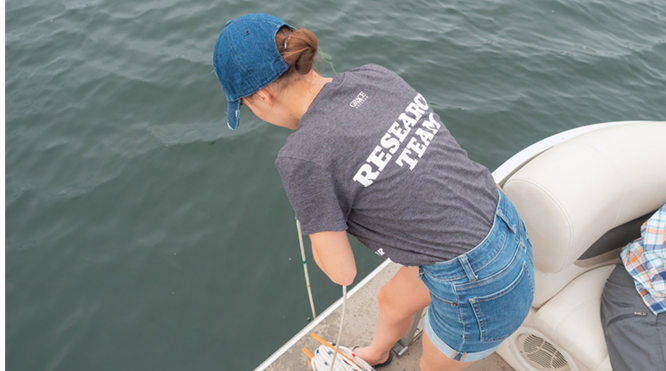Staff Report
WINONA LAKE – This summer, the Lilly Center for Lakes & Streams conducts a countywide lake study to drive the next 10 years of research efforts.
Every summer since 2013, the Lilly Center has conducted research on 12 all-sport lakes in Kosciusko County. This research also includes Center Lake and Pike Lake. Water samples from these 14 major lakes allow us to see trends in our lake’s health, according to a news release from the Lilly Center for Lakes & Streams.
Kosciusko County is home to over 100 lakes, many with surrounding communities. In 2013, the Lilly Center conducted a short-term study of 45 county lakes to gain a broader perspective on the different watersheds in the county. That lake checkup helped focus the Lilly Center’s efforts where they were most needed.
Two years later, the Lilly Center specifically researched the presence of different toxins in the 14 major lakes. Although several toxins were present, one deserved further research. Microcystin, a toxin produced by blue-green algae, can be present in quantities high enough to cause harm to pets.
“When we set up the toxin study in 2015, our goal was to identify which toxins were prevalent in our county,” said Jed Harvey, Lilly Center research technician. “The research led us to focus our efforts on microcystin.”
In 2023, 10 years after these initial studies, it is time for another checkup: a county-wide lake study. This study will marry the Lilly Center’s efforts from 2013 and 2015. According to Harvey, the research team will sample all 45 lakes again “to ensure that our research covers the toxin-related health hazards we could find in the county.”
Harvey’s team will sample each lake for four toxins in addition to microcystin. These toxins are Anatoxin A, Cylindrospermopsin, Saxitoxin, and BMAA (beta-methylamino-L-alanine). Each of these toxins could be produced by any number of blue-green algae species.
Assistant director of research at the Lilly Center, Matt Burlingame, explains how sampling for these toxins could make a difference. “If, for example, we see more Anatoxin A in our lakes, we can shift our focus and spend more time researching it,” he says.
As to what this county-wide study may reveal, Burlingame adds that “it’ll be interesting to see if the toxin ratios have changed in the past ten years. I’m also curious if there’s a correlation between microcystin levels in the 14 major lakes and microcystin levels in the smaller lakes.”
A special thanks to the K12 Health Foundation for making this research project possible.
This research is part of a collaborative effort to preserve our lakes for future generations to enjoy. Learn more about the Lilly Center’s mission and research at lakes.grace.edu.





